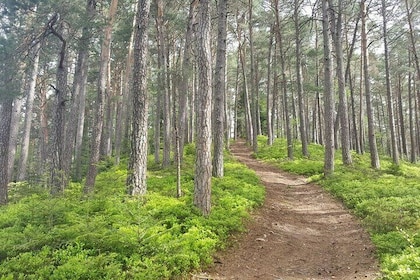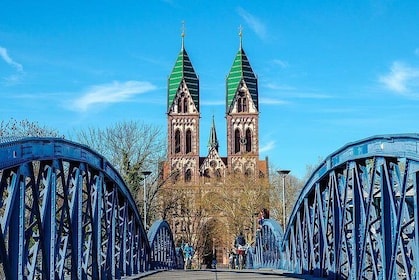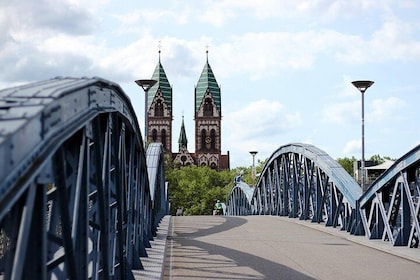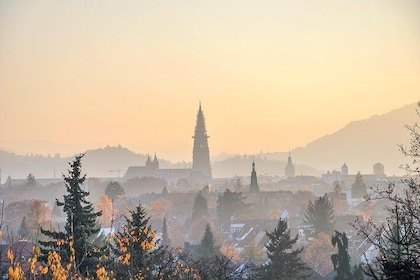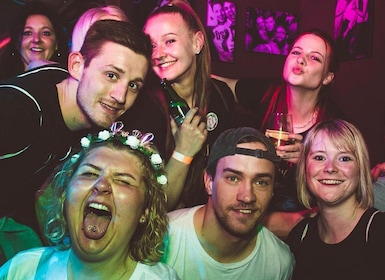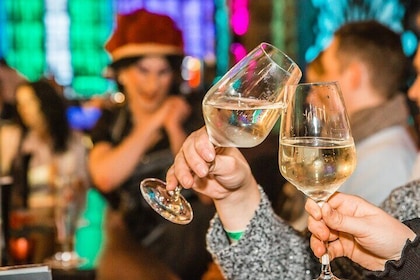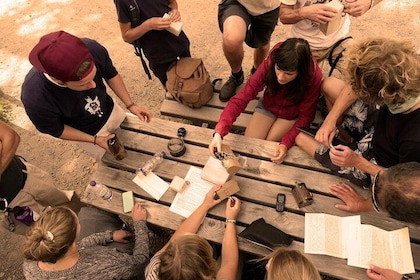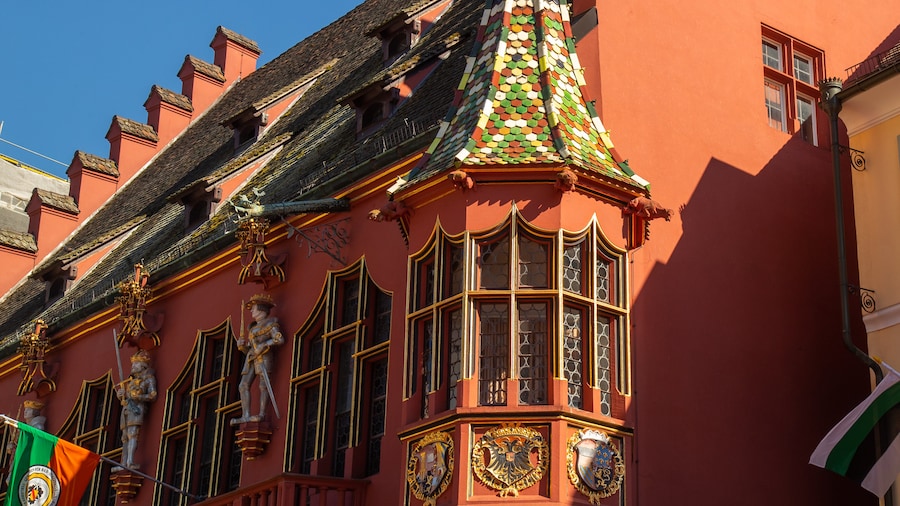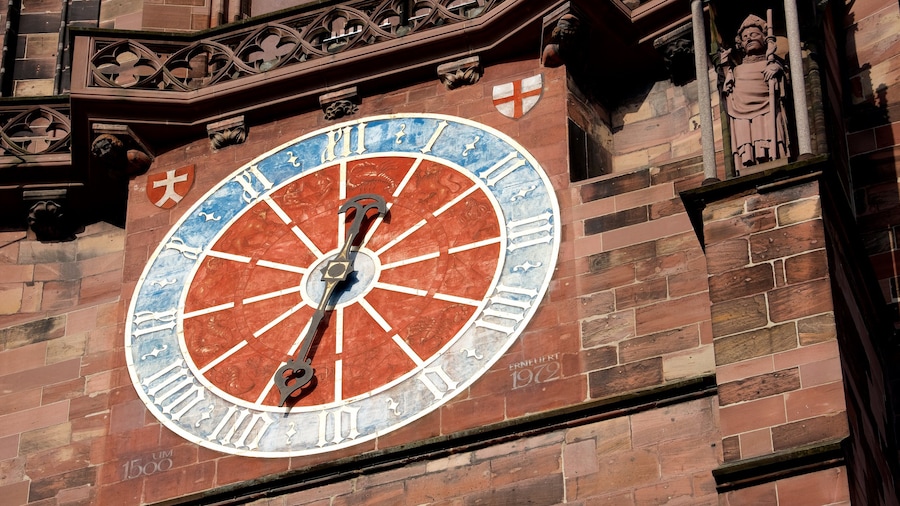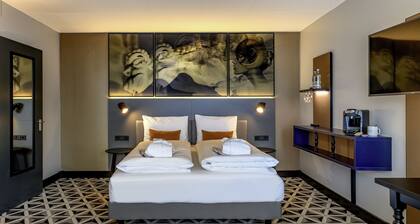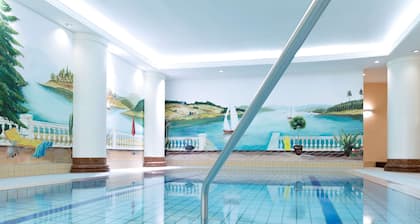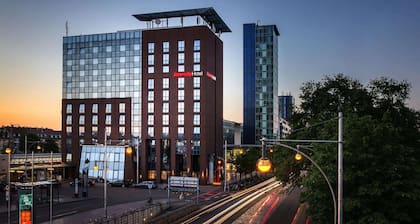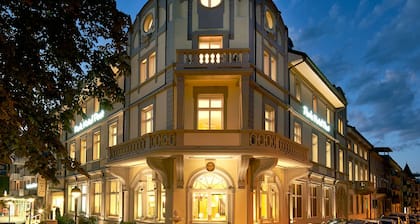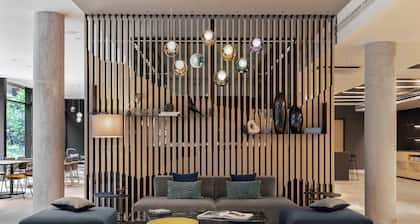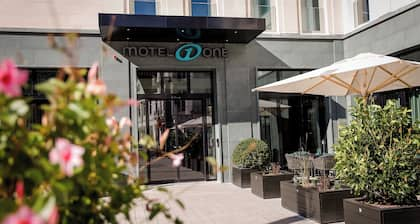One of the last remaining city gates of Freiburg, the Schwabentor stands on most trajectories from the city to the mountain. It is worth a closer look too. Decorated by three waves of artists who each added their own symbolism to the brickwork, the gate offers a unique window onto the self-conception of the people of the area. Stop in the adjacent square, known as the “Square of the Last Barricade of 1848,” a reminder of Freiburg’s past, and admire the sturdy masonry from a distance before approaching for a closer look.
On the outside, spot the 1903 painting of St. George, Freiburg’s patron saint, slaying the dragon. Admire the emotion in his face, likely common to some of the defenders who once used this tower as a fortification. Walk toward the inner arches, looking for the Romanesque depiction of the “Boy with Thorn” symbol, meant to remind all those who entered and left the city of the necessity of humility.
On the inner wall, see the tower’s most famous artwork, the 16th-century painting of a merchant who gave the tower its name and sparked a 19th-century myth. Based on the painting, it tells the story of a Swabian man who tried to buy the city but was rejected by the proud townspeople and fooled by his wife. Go inside to the Zinnfigurenklause, a diorama museum full of 9,000 small tin figurines depicting great moments from southern German freedom movements, their tiny bodies alive with energy and passion.
Find the Schwabentor at the southeastern corner of Freiburg Altstadt, a few steps from the banks of the Dreisam and right at the base of the Schlossberg. A tram stop is located immediately beside the gate, offering easy connections throughout the rest of the city. Take the tram from the central train station in 10 minutes or walk here in 15 minutes. Walk from the Freiburg Cathedral in 4 minutes. The Zinnfigurenklause is open between May and October from Tuesday to Sunday. Generally it is open from mid-afternoon to evening, except for shortened hours on weekends.





